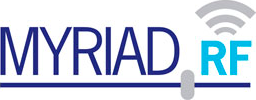Thanks Ignas for the explanation.
So if I send something far enough in the future, only the beginning will go from the PC to the Lime over USB and be stored in some buffer on the Lime. Then once it’s time to send it, the buffer will have some free space and only then will the following part of the signal be sent from the PC to the Lime over USB? That would definitely explain what I see.
In that case, is there a way to change the size of the buffer to hold more data inside the Lime?
That’s indeed what I’m seeing.
It seems even with only 1 TX at 55MS/s and no RX, samples are not always sent fast enough to the Lime when transmitting at once.
Is there anything I could configure, like
- using (or not using)
SOAPY_SDR_END_BURST? - setting the
latencywhen setting the stream up? I tried both1(maximum throughput) and0(lowest latency) but it doesn’t seem to change much. I can’t really say one is better than the other. - there’s also
bufferLengthortxBufferLength, but I’m not sure where they are used.
You’re right of course. Also the type of USB you choose is important. I’ve noticed on my Windows computer that if I plug the Lime on a USB 3.0 (3.1 Gen 1) it is not fast enough while 3.1 (3.1 Gen 2) is good (even though the FX3 is only 3.0). Using a good USB cable is also important.
It seems that if I have 2 activated channels in RX, even if I’m not actually reading samples through USB, then I can’t send samples fast enough on a single TX. I only see the very beginning of my signal being sent. Maybe as there are 2 RX, even if there’s just one TX and I’m not actually reading samples, the Lime goes into MIMO mode and the internal buffer for TX is smaller.
If I only have 1 activated channel in RX, then things work quite well with single TX.
